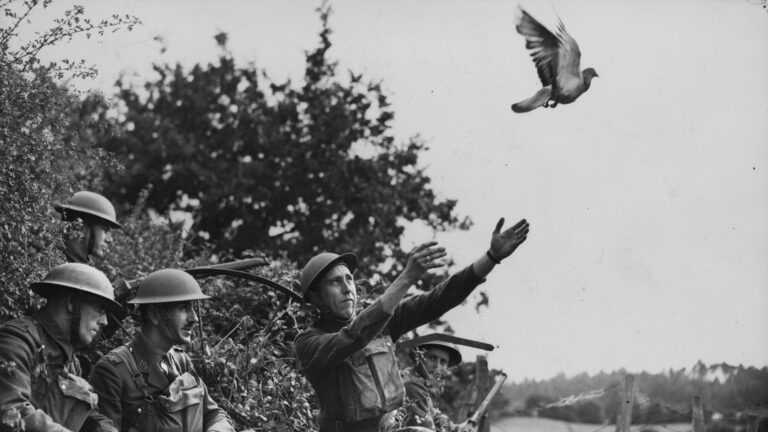As France bid farewell to its last military pigeons, a storied chapter of wartime communication quietly closes. Once vital messengers in the chaos of battle, these birds served as steadfast couriers, carrying crucial information across enemy lines when modern technology faltered. Today, with the pigeons’ retirement, France confronts the end of a fading tradition that bridged history and military ingenuity. This article explores the legacy of these avian veterans and the symbolic significance of their final mission.
France’s Last Military Pigeons Uphold a Historic Communication Role
Amid the rise of advanced digital communication technologies, a handful of homing pigeons still carry an emblematic legacy within the French military. Stationed at a quiet loft near the outskirts of Paris, these birds serve as living links to a bygone era where messages traversed battlefields via feathered messengers. Despite modern encryption and satellite systems dominating military communication today, the pigeons retain a crucial symbolic role, reminding military personnel of resilience and the humble origins of secure messaging.
These last avian couriers are meticulously cared for by a dedicated team who emphasize their historic and practical significance. Their training involves:
- Routine flight drills to maintain navigational accuracy
- Health monitoring to ensure peak physical condition
- Emergency communication exercises simulating blackout scenarios
| Pigeon Name | Flight Distance (km) | Year of Birth |
|---|---|---|
| Éclair | 120 | 2019 |
| Minerva | 95 | 2020 |
| Volt | 110 | 2018 |
Inside the Training and Care of These Feathered Veterans
At the heart of the journey to preserve France’s last military pigeons lies a meticulous regimen blending tradition with modern animal care. Each bird undergoes rigorous daily flight exercises, flying distances that gradually increase to sharpen their homing instincts. Trainers emphasize gentle handling to maintain the pigeons’ trust and morale, crucial factors in their performance during message delivery drills. The birds are housed in specialized lofts designed to control temperature and provide ample space for rest, ensuring their well-being amid the demands of training.
The care routine extends beyond physical conditioning, incorporating a tailored diet rich in protein and vitamins, vital for sustaining stamina and health. Attention to detail is paramount, with trainers regularly monitoring for signs of fatigue or illness. Key elements of their care include:
- Balanced nutrition: A mix of grains, seeds, and supplements
- Regular health checks: Administered by avian veterinarians
- Environmental enrichment: Toys and natural perches to reduce stress
- Flight drills: Repetitive but varied routes to simulate real missions
| Training Aspect | Frequency | Purpose |
|---|---|---|
| Flight Training | Daily | Enhance navigation and endurance |
| Health Monitoring | Weekly | Prevent illness and ensure readiness |
| Diet Adjustment | Monthly | Optimize nutrition based on activity |
Preserving a Legacy What Experts Recommend for Sustaining the Tradition
Experts emphasizing the preservation of France’s military pigeons highlight a multifaceted approach combining scientific care, historical education, and community engagement. Specialized breeding programs aim to maintain genetic diversity while ensuring pigeon health through state-of-the-art avian veterinary practices. Alongside medical care, expert handlers advocate for establishing dedicated sanctuaries where the birds can fly freely, reinforcing their natural instincts and promoting well-being. These sanctuaries not only serve biological purposes but also function as living museums, allowing visitors to witness and appreciate a unique chapter of military history.
Beyond biological considerations, cultural conservation institutions stress the importance of transmitting knowledge to younger generations. To achieve this, experts recommend:
- Interactive workshops: Hands-on experiences teaching message-carrying techniques and pigeon training.
- Digital archives: Preserving records, photographs, and firsthand accounts of messenger pigeons in military contexts.
- Collaborations: Partnerships between military heritage organizations and animal welfare groups to ensure ethical treatment and awareness.
| Preservation Focus | Key Methods | Expected Outcome |
|---|---|---|
| Genetic Integrity | Controlled breeding programs | Healthy, diverse pigeon populations |
| Cultural Transmission | Educational initiatives | Increased public awareness |
| Habitat Conservation | Sanctuary creation | Natural behaviors supported |
To Wrap It Up
As France bids farewell to its last military pigeons, it closes a chapter on a unique facet of its wartime heritage. These feathered messengers, once vital to communication on the battlefield, now serve as poignant reminders of a bygone era when technology and tradition intertwined. While modern communications have long rendered pigeon post obsolete, the legacy of these birds endures-preserved by dedicated custodians who honor their extraordinary role in history. In commemorating France’s final military pigeons, we not only acknowledge their contributions to past conflicts but also reflect on the evolving nature of warfare and remembrance.




